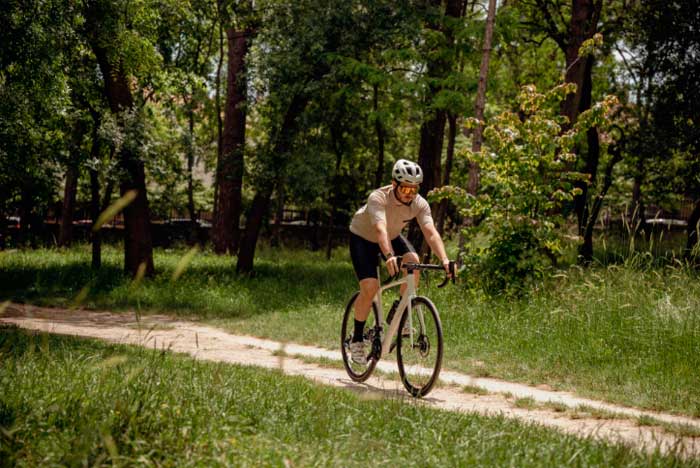Cycling is a fun and healthy way to get around, but it also comes with certain risks. Whether you’re an experienced rider or new to cycling, understanding and practicing road safety is crucial. As explained by Matthew Mclaughlin, many accidents involving cyclists are preventable, often caused by a combination of poor visibility, lack of preparation, or failure to follow traffic laws.

Equipping yourself with the right gear, staying alert, and ensuring your bike is in top condition can greatly reduce your chances of injury. Good habits—like riding predictably, planning ahead, and knowing the rules—don’t just protect you; they contribute to a safer environment for everyone on the road. With the right mindset and a few smart strategies, cycling can be both safe and rewarding.
Why Road Safety Matters for Cyclists
Cyclists are more exposed to risks on the road than drivers, making safety a critical part of every ride. Many crashes happen due to visibility issues, miscommunication with drivers, or poor road conditions. Knowing these common causes helps riders stay alert and make better decisions. A little preparation—like knowing the rules and checking your gear—can go a long way in keeping each trip smooth and injury-free. Even something as simple as making eye contact with a driver at an intersection can help confirm you’ve been seen.
Gear That Helps Keep You Safe
Wearing the right gear dramatically increases your safety and visibility on the road. A properly fitted helmet is one of the most important items—protecting your head in case of a fall or collision. Look for helmets that meet established safety standards to ensure they provide adequate protection. Some models even include built-in lights or reflective elements, adding an extra layer of visibility.
Bright or reflective clothing makes it easier for drivers to spot you, especially during dusk or dawn when visibility is poor. On rainy or chilly days, choosing gloves and shoes with a good grip can help maintain control and comfort. Dressing for the conditions helps you stay focused and steady on the bike. Visibility gear like reflective ankle straps or spoke lights can also make a big difference in low-light conditions.
Make Sure Your Bike Is Road-Ready
Before heading out, give your bike a quick inspection to catch any small issues that could turn into big problems. A loose brake or underinflated tire might not seem like a big deal until you need to stop suddenly or navigate rough pavement. Taking just five minutes to check your bike could prevent a cycling accident.
Even a short ride deserves a quick once-over. Check that your lights are working, your chain is moving smoothly, and your seat and handlebars feel secure. Riders who take the time to maintain their bikes often avoid the kinds of mechanical failures that cause crashes or delays. A regular tune-up at a local bike shop can also help extend the life of your bike and keep it performing safely.
Follow Traffic Laws and Ride Predictably
Cyclists who follow the rules of the road are more likely to be respected and noticed by drivers. Stopping at red lights, yielding when required, and signaling your intentions clearly can help create mutual understanding between riders and motorists. It also sets a positive example for other cyclists, encouraging a culture of safety.
Sticking to bike lanes or the right-hand side of the road when possible helps reduce confusion. Unpredictable movements—like weaving between cars or jumping curbs—can catch drivers off guard and lead to dangerous situations. Riding in a straight, consistent line makes your presence easier to anticipate and safer for everyone around you.
Stay Alert and Aware of Your Surroundings
Your awareness is one of your most reliable tools on the road. Keeping your eyes up and scanning ahead can help you spot threats early, from debris scattered across the shoulder to a car door swinging open in your path. It’s also smart to glance over your shoulder before changing lanes or making a turn.
Riding with headphones on or looking down at your phone distracts you from what’s happening around you. Staying fully engaged allows you to make split-second decisions when needed. Busy intersections, merging traffic, and hidden driveways all require your full attention to navigate safely. Even familiar routes can present surprises, so maintaining awareness never goes out of style.
Plan Ahead and Bring the Essentials
Thinking ahead can turn an ordinary ride into a safer, more enjoyable experience. Choosing routes with bike lanes or lower traffic volumes often leads to fewer close calls and a smoother trip. Weather apps and traffic maps can also help you avoid sudden storms or congested roads.
Bringing along a few key items like a water bottle, ID, and a small repair kit gives you peace of mind. Unexpected detours or a flat tire won’t become major setbacks when you’re prepared. It’s also worth brushing up on local cycling laws and practicing handling skills regularly so you feel confident in different riding conditions. Some cyclists also carry a small first-aid kit or an emergency contact card, just in case.
